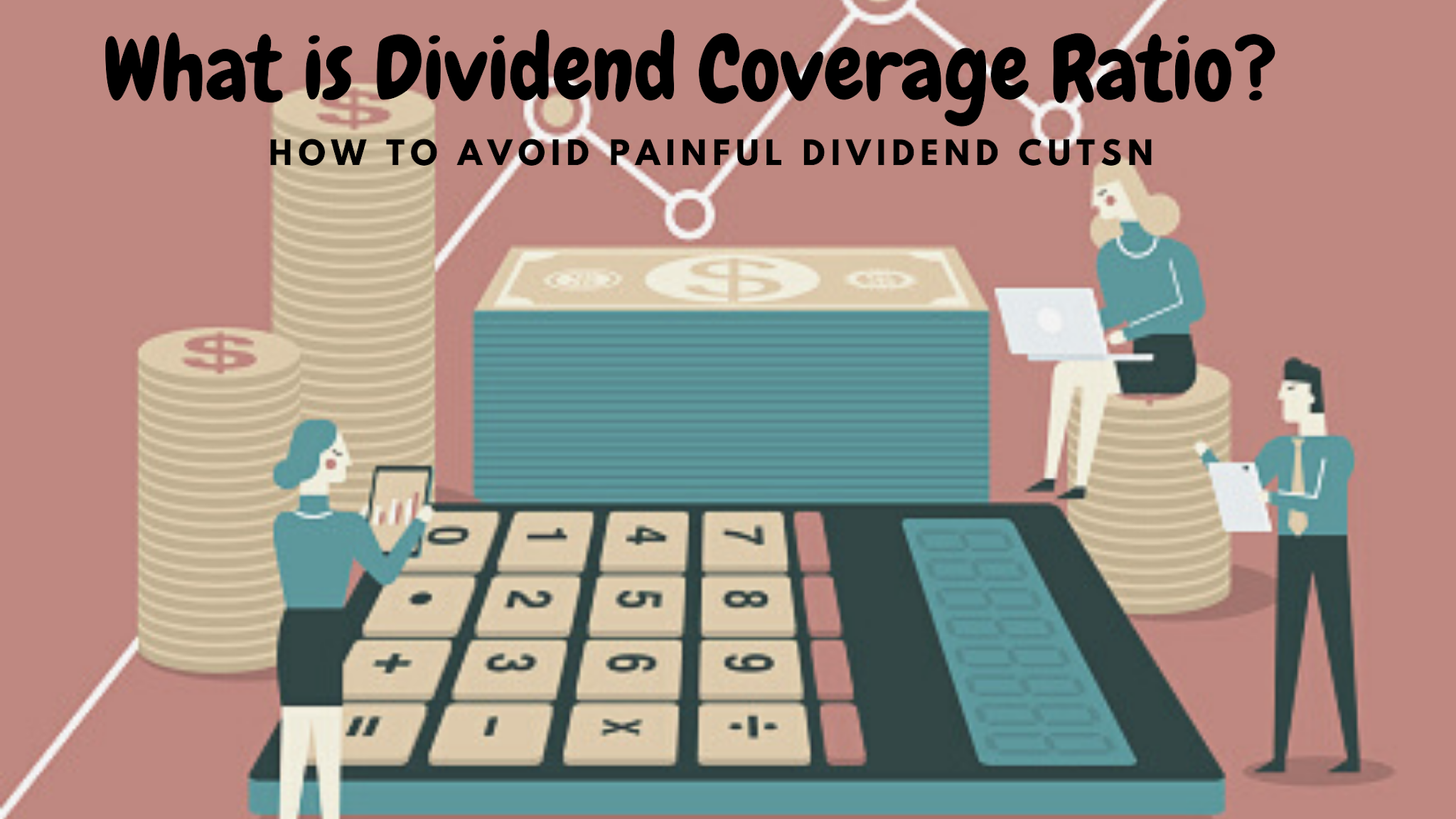
If you’re reading this, it’s because
1. Reliable income.
2. To make your money grow.
One of
Dividend growth investing.
If you don’t know what
These stocks
The key to being successful with dividend growth investing is
And more importantly…
How to avoid painful dividend cuts!
Dividend Cuts & Suspensions – An Investor’s Worst Enemy
As I write this, we’re
In times like these, companies make fewer sales, earn less money, and are sometimes forced
The
Not only will you lose income, but the stock prices of companies tend to plummet after a dividend cut announcement.
So…
How
Related:
Dividend rate of growth – the way to Grow Your Wealth Without Lifting a Finger
One ofthe simplest ways to work out this is often the dividend coverage ratio.
(Thisis analogous to the payout ratio – more below).
One of
(This
What Does Dividend Coverage Ratio Mean?
The dividend coverage ratio (also called dividend cover) measures how well a company’s earnings cover the dividend.You see, buying a stock As one of the world’s richest people, I’d say he knows a thing or two! 😉
When you buy
The dividend coverage ratio is
Dividend Coverage Formula
So howIt’s simple.
First,
1. The dividend amount per share
2. The earnings per share
I say per year because earnings can sometimes fluctuate between quarters. watching yearly figures evens everything out and provides you a more accurate result.
Onceyou've got those two numbers, plug them into this formula:
Dividend Coverage Ratio = Earnings per Share / Dividends per share
This will tellyou ways repeatedly over a corporation can cover its dividend with its earnings.
(Note:you'll also use net , or maybe the entire amount of dividends paid. However, it’s tons easier to seek out “per share” numbers, so that’s what i like to recommend you use)
Let meoffer you an example.
In 2019, The Infosys limited (INFY) made Rs. 39.10 in earnings per share (EPS).
It also paid Rs. 17.43 in dividends per share.
If weinsert those values into the formula, this is what we get:
Dividend Coverage Ratio = 39.10/17.43 = 2.25
In other words, they wereable to cover the dividend 2.25 times over.
That’s too impressive…
Ifthat they had a bad year and their earnings dropped, they might not be ready to afford to pay the dividend using earnings only.
Ideally, the dividend coverage ratio should be nearer to 2.
This leaves companieslots of flexibility and may be a great indicator that the dividend is safe.
And as investors who want safe and growing income, that’s what we care about!
Is It
Sort of.
They both measurea similar thing, really:
How well covered a dividend is compared to earnings.
The main difference iswithin the formula. To calculate the payout ratio, you only need to flip the numbers around like so:
Payout Ratio = Dividend per share / Earnings per share.
Let’s usethe instance of INFY again.
Payout Ratio = 17.43/ 39.10 = 0.77 = 44.57%
I personally preferthis manner of watching it, as people inherently understand percentages better.
It’s also the more widely spread way of displaying this metric, soi like to recommend you employ it too.
In the case of the payout ratio, it should be below 100%, but ideally below 60%.
By the way, a dividend coverage ratioof two is that the same as a payout ratio of 50% .
Which Stocks Havethe simplest Coverage?
Atnow I bet you’re thinking:
“OK, so I want to seek out stocks with a high dividend coverage ratio.”
And you’d be absolutely right!
This isone among the foremost important metrics – or signs – that a stock’s dividend is safe.
Ifan organisation encompasses a low dividend coverage, it’s putting plenty of pressure on their earnings to be ready to pay it…
Onthe opposite hand, if an organisation includes a higher coverage (or lower payout ratio) it can afford some bad years and still pay and increase its dividend.
This is actually very difficult to achieve…
Average companies can’tmaintain it .
Only very high-quality businesses with excellent management teams areready to maintain it consistently.
Specifically, dividend growth stocks. I talk more about themduring this article, where I also reveal 3 high dividend blue chip stocks.
A portfoliofilled with them will make sure you keep getting paid an income which your money keeps growing.
If you’dwish to learn the method to search out and analyze blue chip stocks (dividend growth stocks) then I’ve put together a free PDF guide that shows you exactly the way to start .
It’s pretty good if I say so myself! 😆
Just let me know where to send itwithin the form below.
Once
Dividend Coverage Ratio = Earnings per Share / Dividends per share
This will tell
(Note:
Let me
In 2019, The Infosys limited (INFY) made Rs. 39.10 in earnings per share (EPS).
It also paid Rs. 17.43 in dividends per share.
If we
Dividend Coverage Ratio = 39.10/17.43 = 2.25
In other words, they were
That’s too impressive…
If
Ideally, the dividend coverage ratio should be nearer to 2.
This leaves companies
And as investors who want safe and growing income, that’s what we care about!
Is It a similar because the Dividend Payout Ratio?
Sort of.They both measure
How well covered a dividend is compared to earnings.
The main difference is
Payout Ratio = Dividend per share / Earnings per share.
Let’s use
Payout Ratio = 17.43/ 39.10 = 0.77 = 44.57%
I personally prefer
It’s also the more widely spread way of displaying this metric, so
In the case of the payout ratio, it should be below 100%, but ideally below 60%.
By the way, a dividend coverage ratio
Which Stocks Have
At
“OK, so I
And you’d be absolutely right!
This is
If
On
This is actually very difficult to achieve…
Average companies can’t
Only very high-quality businesses with excellent management teams are
What are these companies called?
Blue chip stocks.Specifically, dividend growth stocks. I talk more about them
A portfolio
If you’d
It’s pretty good if I say so myself! 😆
Just let me know where to send it






0 Comments
Please do not enter any span link in the comment box.